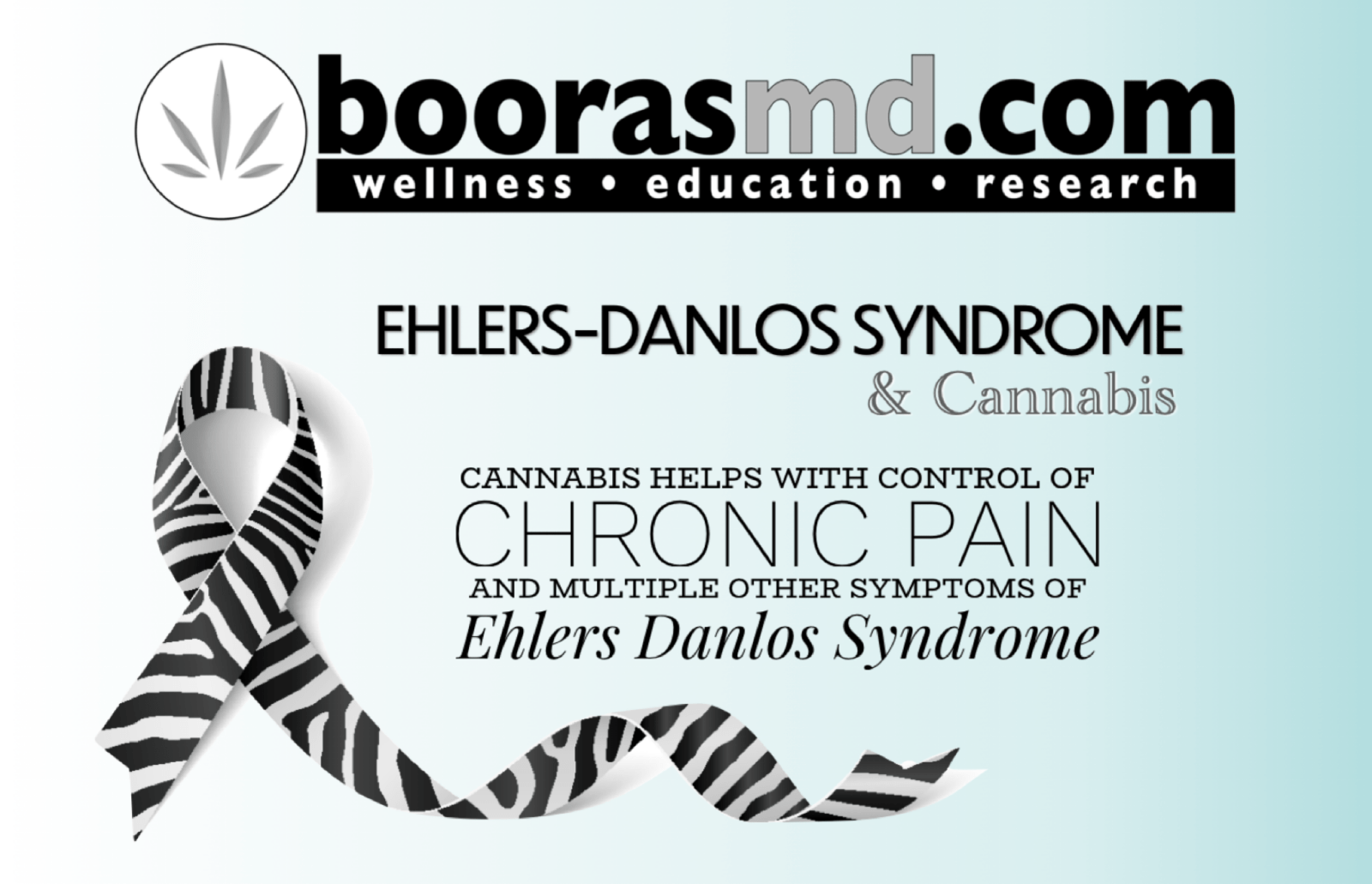Ehlers-Danlos Syndrome (EDS) and Medical Marijuana (Cannabis)
Ehlers-Danlos Syndrome (EDS) and Medical Marijuana (Cannabis)
Summary: Ehlers-Danlos Syndrome (EDS) is a group of disorders affecting the connective tissues that support the skin, bones, blood vessels, and many other organs. Hallmark symptoms include extremely flexible joints and highly elastic skin which is prone to bruising. These conditions are inheritable and commonly under-diagnosed. It is felt to occur in approximately 1 out of every 5000 individuals (approximately 80 million individuals worldwide).
EDS results in debilitating chronic joint pain, early-onset arthritis, loose unstable joints that are prone to sprain and dislocation, fatigue, abnormal wound healing, migraines/headaches, fibromyalgia, osteoporosis, increased risk of prolapses/hernias, cardiovascular disorders, menstrual disorders, pregnancy complications and increased risk of internal organ and blood vessel rupture.
Treatment. There is no cure for this condition. Treatment is directed towards relieving symptoms and attempting to prevent serious complications. For most individuals, the focus is on pain management. Common treatments include nonsteroidal anti-inflammatory drugs (NSAIDs), acetaminophen, opioids, and physical therapy.
At least 37% of people with EDS are using Medical Marijuana (Cannabis) to treat their symptoms. This study of 500 people was published in the November 2020 American Journal of Medical Genetics. “Of all of the traditional and complementary therapies used by respondents, ‘marijuana was self-rated as most effective’”.
Medical Marijuana (Cannabis) helps with pain, inflammation, sleep, anxiety, and headaches (Sativa strains reportedly work best for headaches). People with EDS who use cannabis report, “I have EDS and have found using the drug has helped with spasms and cramps dramatically. Better than popping pain killers that have adverse effects on the body”. “I have Ehlers Danlos, and know from experience marijuana offers relief no pharmaceutical can.”
https://www.change.org/p/uk-parliament-access-to-medicinal-marijuana-for-ehlers-danlos-syndrome-hypermobility-spectrum-disorder
Forms of EDS: There are at least 13 forms of this disorder. The main types are…
- Classical EDS symptoms include joint hypermobility, marked skin hyper-extensibility, tissue fragility, and widened atrophic scars. As with all types of EDS, pain in joints and elsewhere in the musculoskeletal system can be severe.
- Hypermobile EDS is characterized by recurring joint dislocations and severe chronic joint pain. This form of EDS also includes symptoms of autonomic dysfunction where heart rate changes while going from lying or sitting to standing can lead to fainting. This came severely impaired quality of life. Other symptoms include muscle cramps, headaches and fatigue. Women have this form of EDS more than men.
- Vascular EDS. This form of EDS is associated with structural anomalies in blood vessels. This increases the risk for rupture of blood vessels and some hollow organs, like the colon. The skin, rather than being hyperextensible, is thin, translucent, and prone to easy bruising. Joint hypermobility is usually limited to small joints in the hands.
Musculoskeletal pain is a major symptom for people with EDS. The cause is likely due to a variety of factors. As a result of pain and generalized joint instability people with EDS commonly reduce activity which results in further weakness of muscles and increased laxity of joints. There can be a downward spiral of problems with balance, loss of confidence, and fear of movement and pain.
References:
https://pubmed.ncbi.nlm.nih.gov/32909698/
https://www.thelancet.com/journals/lanrhe/article/PIIS2665-9913(19)30099-2/fulltext
https://wayofleaf.com/cannabis/ailments/cannabis-for-ehlers-danlos-syndrome
Written by Charlie Booras, MD
January 11, 2021



